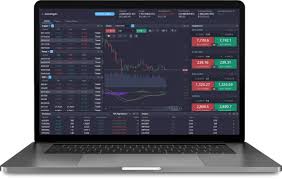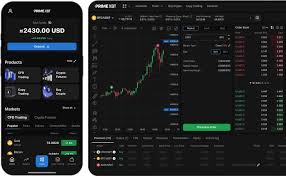
Understanding PrimeXBT Spreads
In the world of trading, understanding PrimeXBT Spreads PrimeXBT Spreads is essential for anyone looking to achieve consistent profitability. This article will delve into what spreads are, how they work on the PrimeXBT platform, and strategies that traders can employ to maximize their efficiency while navigating these spreads.
What Are Spreads?
A spread in trading is the difference between the buy (ask) price and the sell (bid) price of an asset. It essentially represents the cost of trading that asset; the narrower the spread, the less you will pay to enter or exit a trade. In the case of PrimeXBT, spreads can vary according to market conditions, the asset class being traded, and other factors such as liquidity and volatility.
Types of Spreads
Trading spreads can be categorized into two main types: fixed and variable spreads. Fixed spreads remain constant regardless of market conditions, while variable spreads can change with market fluctuations.
Fixed Spreads
Fixed spreads provide traders with certainty regarding their trading costs. This can be particularly beneficial during times of high volatility when variable spreads may widen. PrimeXBT offers competitive fixed spreads on various assets, which can help traders maintain their strategies without the worry of unexpected spread changes.
Variable Spreads
Variable spreads can widen or narrow based on the asset’s liquidity and market activity. During high volatility, such as during major news events or economic releases, variable spreads may increase, resulting in additional trading costs. Understanding how and when these spreads change is crucial for developing effective trading strategies on platforms like PrimeXBT.
Factors Influencing PrimeXBT Spreads
Several factors can influence the spreads offered on PrimeXBT, including but not limited to:
- Market Liquidity: Higher liquidity typically results in tighter spreads. When an asset has fewer buyers and sellers, spreads can widen.
- Volatility: Increased volatility often leads to larger spreads, as market makers anticipate greater risk and adjust their pricing accordingly.
- Time of Day: Trading activity varies throughout the day. Major market openings or closings can impact liquidity and, hence, the spread.
- Type of Asset: Different assets have different underlying liquidity and volatility characteristics, which can influence the spreads available.
Benefits of Understanding Spreads

Grasping the concept of spreads and how they function on PrimeXBT can provide several advantages for traders:
- Cost Management: By understanding spreads, traders can better calculate their entry and exit costs, leading to more informed decisions.
- Improved Trading Strategies: Knowledge about spreads can improve trading strategies. For example, traders may choose to avoid trading during times of high volatility when spreads widen significantly.
- Better Risk Management: Awareness of spread fluctuations can enhance risk management strategies, allowing traders to set more effective stop-loss and take-profit levels.
Strategies for Trading with PrimeXBT Spreads
Successfully trading with spreads on PrimeXBT requires a blend of market knowledge and strategic planning. Here are some strategies that can help you navigate spreads effectively:
1. Scalping
Scalping involves executing numerous trades within a short period to capitalize on small price movements. Traders utilizing this strategy benefit from tight spreads since the cost per trade becomes a significant factor in overall profitability. In this context, a platform like PrimeXBT offers the potential for favorable fixed spreads.
2. Swing Trading
Swing traders tend to hold positions over several days or weeks. For them, it is crucial to understand the average spread on the asset they intend to trade. Analyzing past spread behavior during specific market conditions can also guide optimal entry and exit points.
3. News Trading
News trading focuses on capitalizing on volatility around major economic announcements. However, traders should be wary as spreads typically widen during these times. Being prepared and understanding how spreads may react can help traders manage risk effectively.
4. Using Chart Patterns
Analyzing chart patterns can also lead to better entries and exits. Traders should factor in spreads when assessing support and resistance levels, ensuring their strategies consider additional trading costs.
Conclusion
Grasping the concept of PrimeXBT spreads is not only vital for entering trades effectively but also for developing a comprehensive trading strategy that minimizes costs and maximizes potential gains. By understanding the nature of spreads, their influencing factors, and employing useful trading strategies, you can navigate the dynamic trading environment more effectively. Staying updated with changes and trends related to spreads will ultimately lead to smarter trading decisions on platforms like PrimeXBT.

Leave a Reply